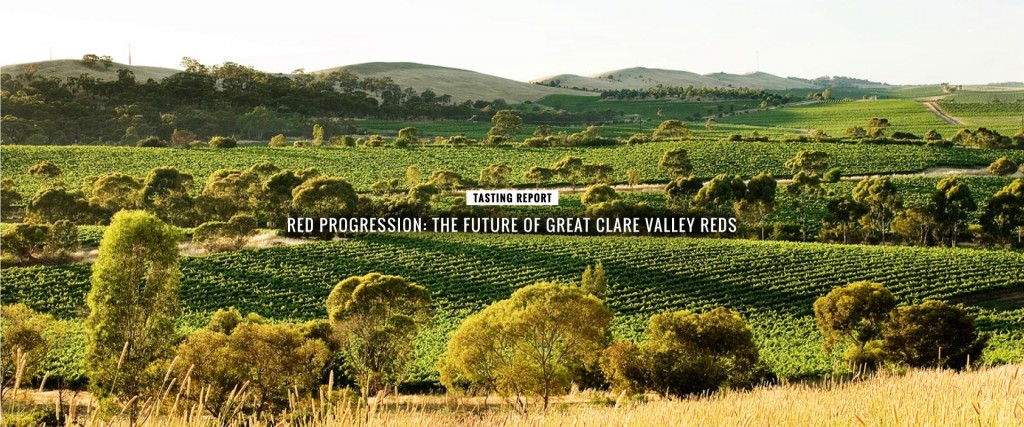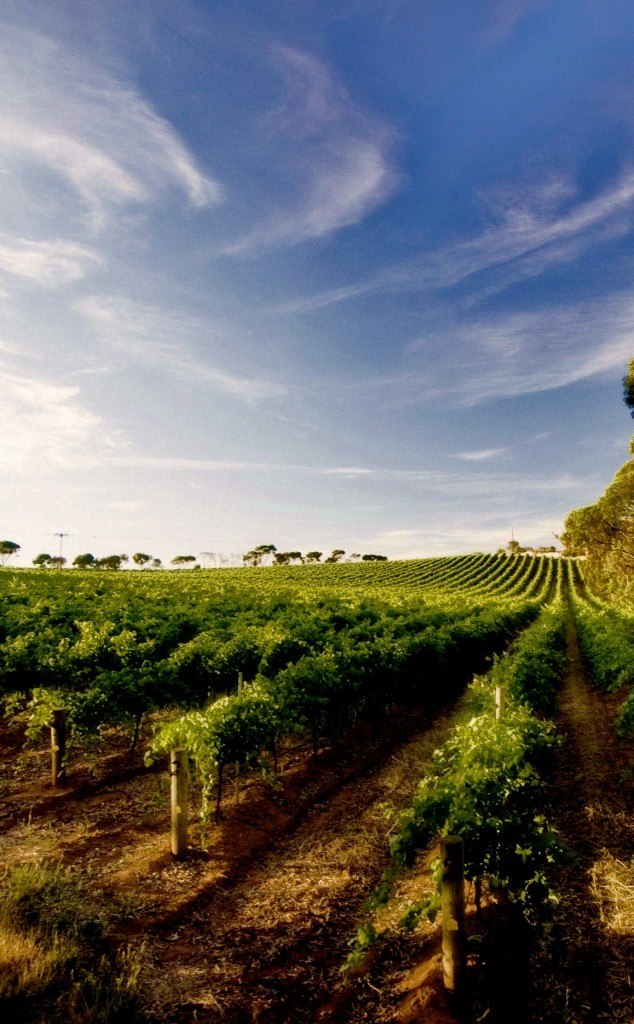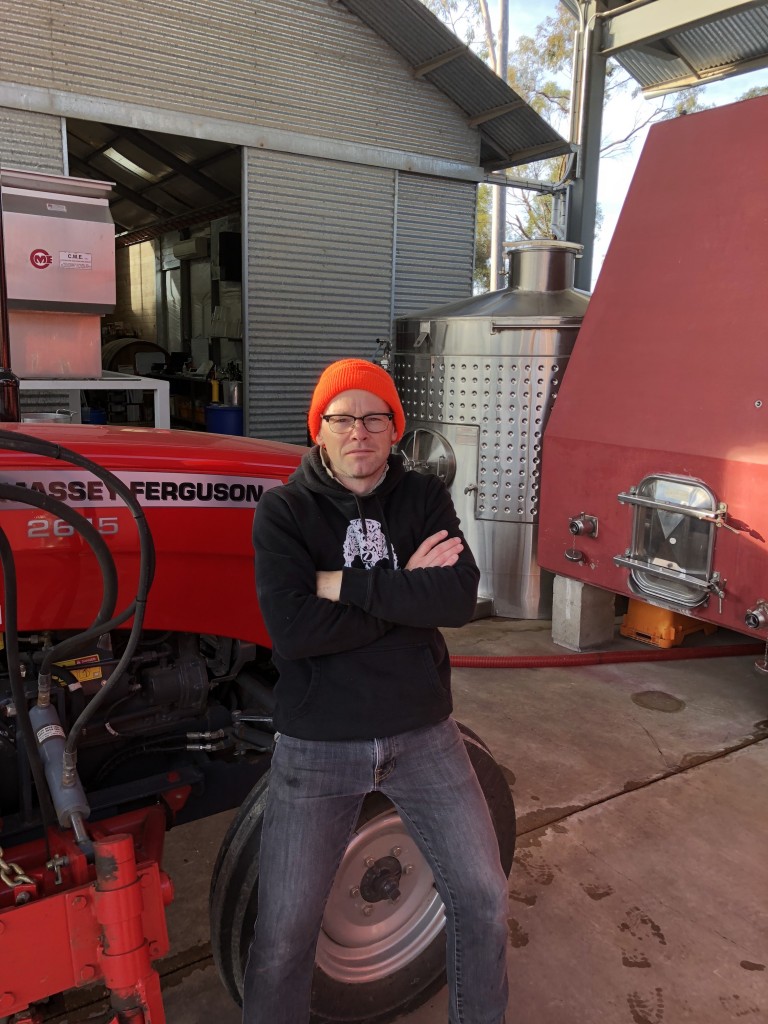

Situated on the eastern ranges of Clare, The Lodge Hill Vineyard is one of the highest points in the valley.
Typecasting is a double-edged sword. I doubt Clint Eastwood ever complained about slipping on a new cowboy hat, nor did De Niro moaned through another double-breasted mob boss suit fitting. Nevertheless, being known for just one thing can be a drag. It does, however, mean you’re probably pretty good at that thing — whatever it is. And in the case of the Clare Valley, it’s all about being good at riesling.
The Clare is Australia’s most famous source of great riesling hands down. Whilst riesling basks deservedly in the limelight, there’s a deep vein of red running the length of the arterial central valley up and out, tracing trickling creeks, hills and valleys. There’s a lot of great red wine country in the intricate landscape of Clare and it is famously home to one of the most enigmatic Australian red producers: the revered Wendouree Cellars.
Clare’s ability to deliver reds with structure, freshness and long aging potential is a thing of reverence. The hero red grape in quality terms is cabernet sauvignon. It outguns shiraz with its ability to deliver focus and punch when it’s young and it also ages very well. Clare cabernet is consistent. These wines start fresh and stay fresh.
There’s a well-documented tradition of blending cabernet sauvignon with malbec, a historic style over which producers continue to strengthen their ownership. Wineries, such as Leasingham and Wendouree, have made it a signature style. More recently, Jim Barry has reissued a suite of cabernet malbec and varietal malbec wines, placing them at the upper end of their red range. They’ve also revived a historic St. Claire label and deployed it on the top tier of these new wines.
Having said all that, this is a category that still takes most of its cues from traditional red wine styles. Shiraz has been a mainstay, and it has been influenced by the nearby and higher-profile wines of the Barossa Valley. Like the Barossa, old vines and a long history have built a strong reputation for shiraz in the Clare region. And like cabernet, it also delivers impressively when cellared and even has the potential to outgun it when drunk young.
It’s an interesting conundrum. Clare is deeply invested in traditional red wine styles in a world where fresher red wines that drink well when young are driving sales in the cool, casual wine bar and restaurant game. The place is dripping with potential for new styles to be explored. The innate freshness seen in traditional red styles here beckons a fresh approach, which looks to spread the possibilities of style throughout what is ultimately a very diverse region. Hence, younger, fresher Clare Valley reds are a no-brainer.

Colin McBryde, the winemaker of Adelina, is making exciting young reds in Spring Farm Valley, which is just south of the township of Clare.
Adelina is one label that leads the charge to reimagined styles, working intelligently with a number of red varieties. They take quality vineyards (sometimes with very old vines) and look to a lighter touch in the winery. Their shiraz mataro, varietal grenache and innovative field blend (shiraz, grenache, mataro, ugni blanc and carignan) all drink well as young wines and show the potential to mature with interest in bottle.
Ben Marx’s Gertie Cabernet Franc has been one of the most innovative wines from the region, playing strongly into the light, fragrant and smashable red zone and drawing new interest into the region’s red wines. More of this is needed and there’s a ready-made desire to see Clare make these wines. Clare needs to tap into the band of red wines that deliver aromatic freshness, deep flavors and approachable structure. The styles that mirror things, such as Italian dolcetto and French cru Beaujolais, are a possibility here.
Grosset Wines has succeeded in blending cabernet franc with cabernet sauvignon in their traditionally styled Gaia blend, and the latest 2015 vintage is superb. More recently, Grosset has ventured in another direction blending of nero d’avola with shiraz. The blend shows some early promise for what is a medium-bodied, earthy and spice-driven red for earlier drinking. It will be interesting to follow.
Over at Pikes Wines, the winemaker Neil Pike has long had a fascination with Italian varieties and styles and has made a number of Italian-inspired reds, which take their cues from fusing Italian savoriness with relaxed Aussie country living in much the same way as Coriole does in McLaren Vale. They’re good, consistent wines packed with soulful interest, offering great value in much the same way as Coriole.
There’s a lot of good wine in this report and, much like the wines we recently tasted in Spain for our upcoming tasting report there, many producers easily hit a 90-point level of quality. But there’s also a sameness in terms of style that needs to be addressed, and the potential is in the terroir to make quality wines in a wider range of styles. If growing and making red wine in Clare is given the same level of thought, care, time and attention as riesling, I’ll wager their red game will change very fast indeed.— Contributing Editor Nick Stock, who has served as the Chair of Judges for the past three years at the Clare Valley Wine Show.

